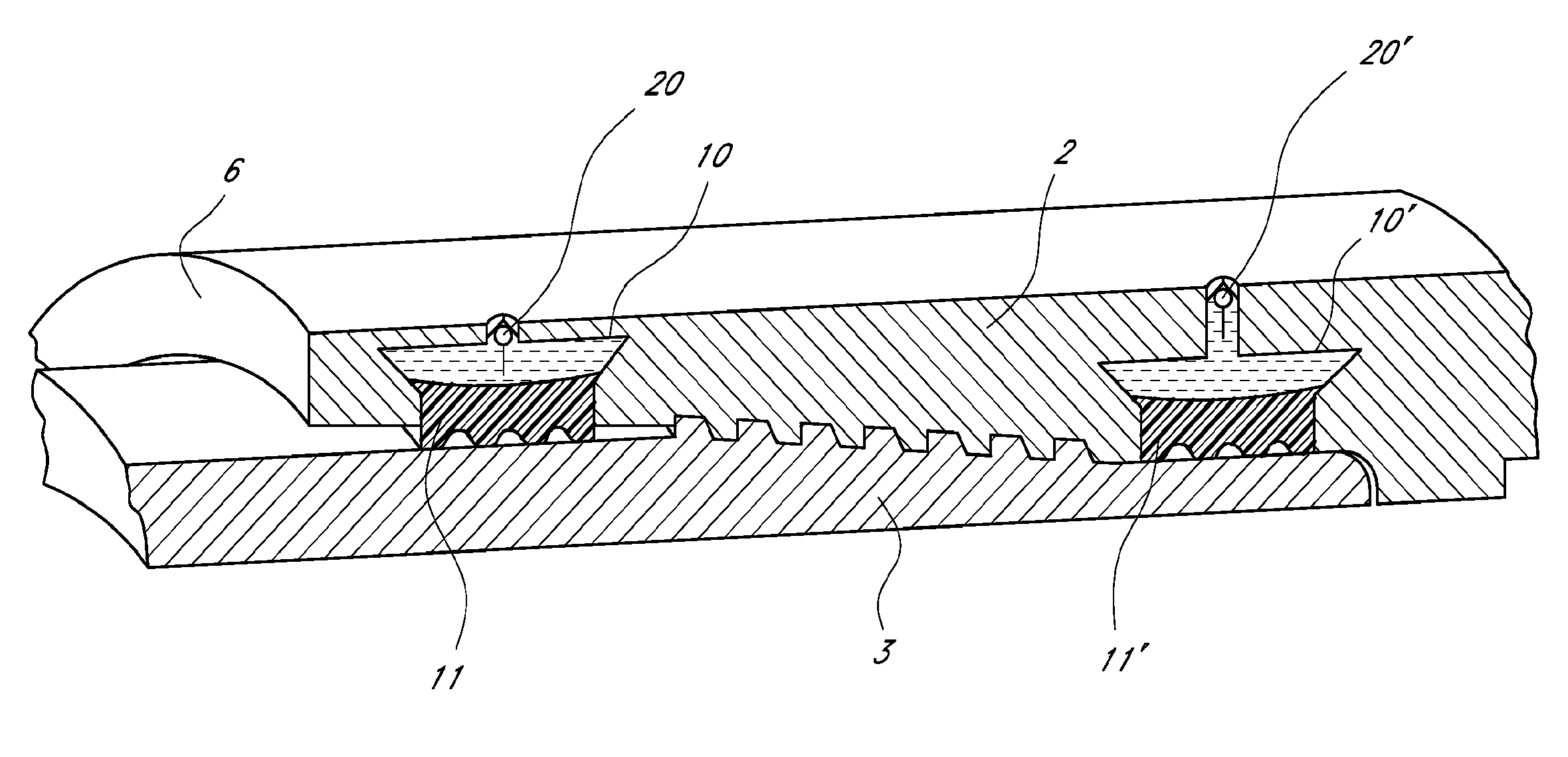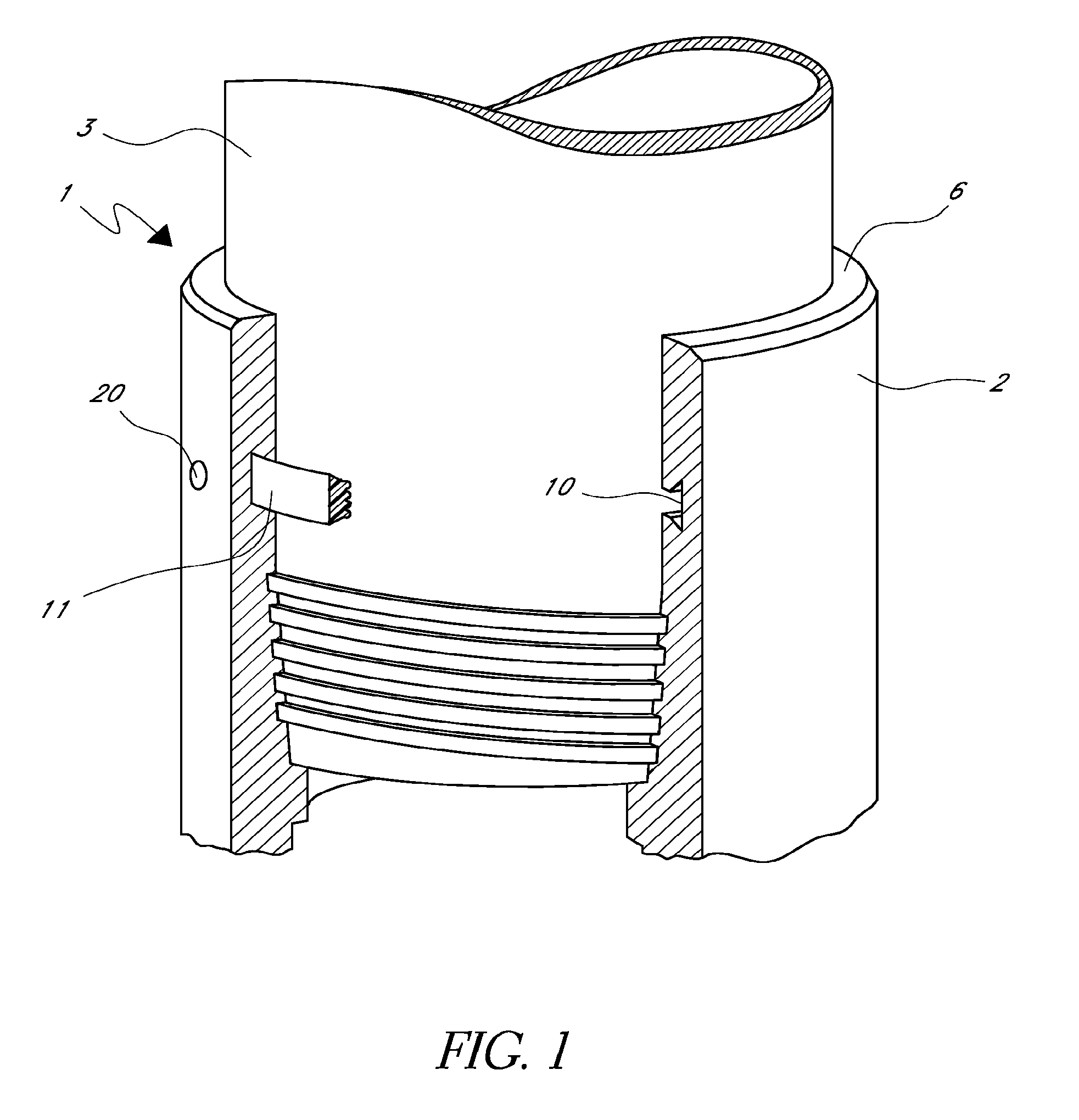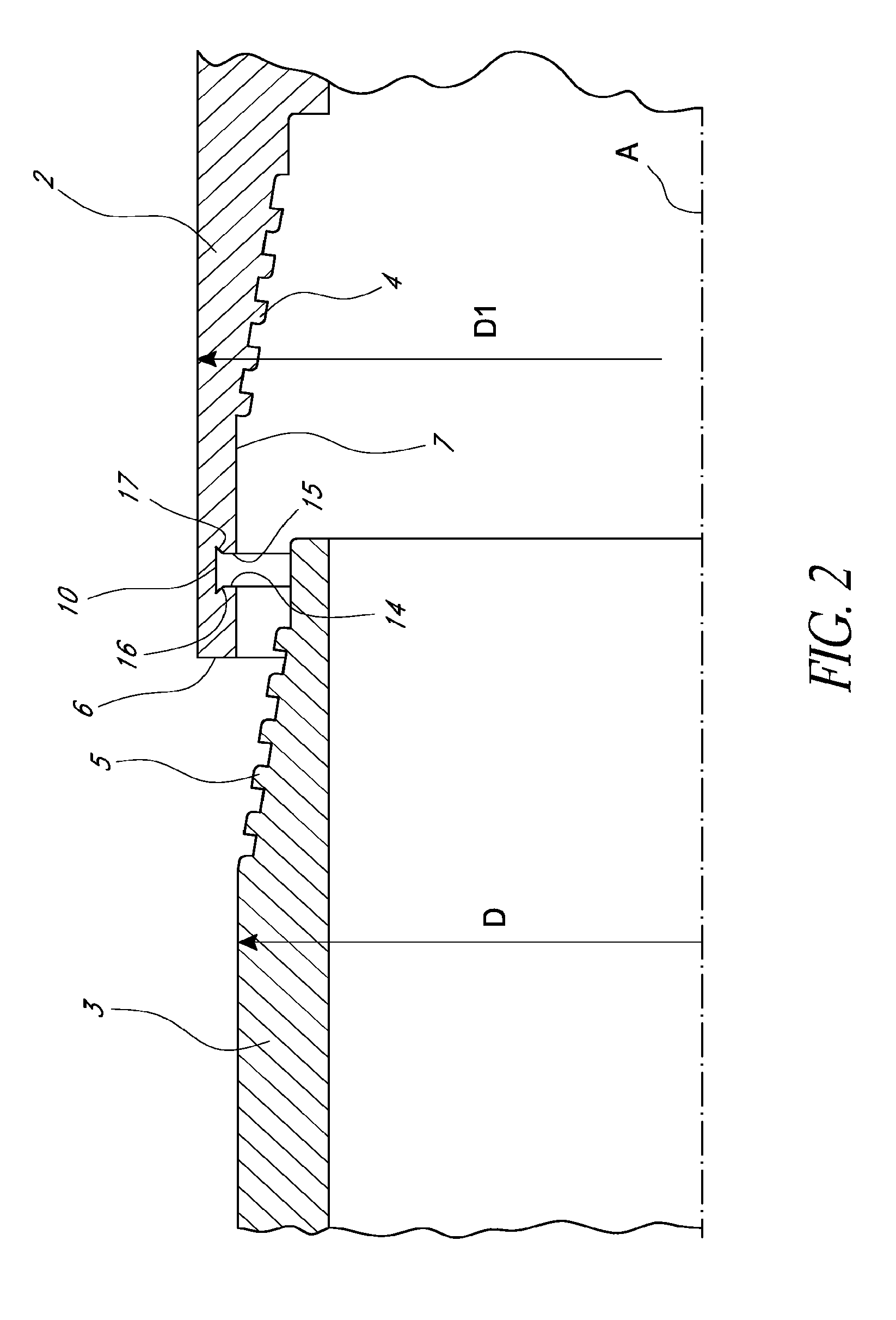Threaded joint with pressurizable seal
a threaded joint and seal technology, applied in the field of threaded joints, can solve the problems of affecting the elastic range of the modulus of elasticity, the deformation of the joint seal, and the increasing demands of hydrocarbon hardware and devices, so as to preserve coupling design and performance, and withstand high axial loads
- Summary
- Abstract
- Description
- Claims
- Application Information
AI Technical Summary
Benefits of technology
Problems solved by technology
Method used
Image
Examples
Embodiment Construction
[0031]With particular reference to the figures, there is shown a threaded joint indicated overall by reference numeral 1, connecting two tubes, a male tube 3, also called a pin, with a nominal external diameter D, and a female pipe 2, also called a box, of external diameter D1.
[0032]The pin 3 has a threaded portion 5, with male threads of appropriate profile, e.g. trapezoidal, and the box 2 has an internal threaded portion 4 with female threads. The common axis of the pipe and the pin and box is indicated by A.
[0033]The box 2 ends with a nose 6. The portion of the box 2 close to the nose 6 comprises a non-threaded surface 7.
[0034]Preferably, but not necessarily, the joint 1 has an internal metal-to-metal seal between the pin nose 6′ of the pin 3 and box shoulder 8.
[0035]With particular reference to the embodiment of FIG. 1, there is provided a housing configured as an annular groove 10 in the box 2 between the end of the thread 4 and the nose 6. The groove 10 houses a ring 11 formin...
PUM
 Login to View More
Login to View More Abstract
Description
Claims
Application Information
 Login to View More
Login to View More - R&D
- Intellectual Property
- Life Sciences
- Materials
- Tech Scout
- Unparalleled Data Quality
- Higher Quality Content
- 60% Fewer Hallucinations
Browse by: Latest US Patents, China's latest patents, Technical Efficacy Thesaurus, Application Domain, Technology Topic, Popular Technical Reports.
© 2025 PatSnap. All rights reserved.Legal|Privacy policy|Modern Slavery Act Transparency Statement|Sitemap|About US| Contact US: help@patsnap.com



